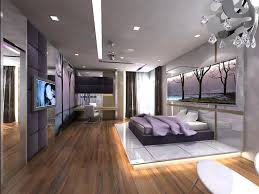Exploring the Timeless Elegance of Korean House Interior Design

The Beauty of Korean House Interior Design
Korean house interior design is known for its harmony with nature, simplicity, and functionality. Traditional Korean homes, known as hanok, are characterized by their elegant aesthetics and thoughtful use of space.
One key feature of Korean house interior design is the use of natural materials such as wood, clay, and stone. These materials create a warm and inviting atmosphere that connects inhabitants with the surrounding environment.
In a typical Korean house, you will find minimal furniture arranged in a way that maximizes open space. Rooms are often multi-functional, with sliding doors and partitions that can be adjusted to create different living areas as needed.
Another important aspect of Korean house interior design is the concept of ondol, which refers to the traditional underfloor heating system. Ondol allows for efficient heating during cold winters while also promoting good air circulation throughout the home.
Korean interior design also incorporates elements of feng shui to create a harmonious balance of energy within the space. Colors are chosen carefully to evoke specific moods and enhance the overall ambiance of the home.
Whether you are looking to incorporate traditional Korean design elements into your own home or simply appreciate the beauty of this style, Korean house interior design offers a timeless aesthetic that celebrates nature, simplicity, and balance.
Top 5 FAQs About Korean House Interior Design: Key Features, Natural Materials, Ondol Heating, Feng Shui Influence, and Color Schemes
- What are the key features of Korean house interior design?
- How does Korean house interior design incorporate natural materials?
- What is the significance of ondol in traditional Korean homes?
- How does feng shui influence Korean house interior design?
- What are some common color schemes used in Korean house interior design?
What are the key features of Korean house interior design?
Korean house interior design is characterized by several key features that set it apart from other styles. One prominent feature is the use of natural materials like wood, clay, and stone, which create a warm and inviting atmosphere while connecting the space with nature. Another key aspect is the minimalist approach to furniture and decor, with an emphasis on open spaces and multi-functional rooms. Traditional Korean homes often incorporate sliding doors and partitions that can be adjusted to create different living areas as needed. The concept of ondol, a traditional underfloor heating system, is also a significant feature of Korean house interior design, providing efficient heating during cold winters and promoting good air circulation. Additionally, the careful selection of colors and incorporation of feng shui principles contribute to creating a harmonious balance of energy within the space.
How does Korean house interior design incorporate natural materials?
Korean house interior design incorporates natural materials in a thoughtful and harmonious way that enhances the overall aesthetic and ambiance of the space. Traditional Korean homes, or hanoks, often feature elements such as wood, clay, and stone to create a warm and inviting atmosphere that connects inhabitants with nature. These natural materials are not only visually appealing but also contribute to a sense of tranquility and balance within the home. By using materials sourced from the environment, Korean interior design embraces sustainability and promotes a deeper connection with the natural world, making it a popular choice for those seeking a serene and environmentally conscious living space.
What is the significance of ondol in traditional Korean homes?
The significance of ondol in traditional Korean homes lies in its functionality, efficiency, and cultural importance. Ondol, the traditional underfloor heating system used in Korean houses, not only provides warmth during cold winters but also promotes a sense of comfort and well-being for inhabitants. This heating method allows for even distribution of heat throughout the living spaces, creating a cozy environment for families to gather and relax. Additionally, ondol reflects the resourcefulness and ingenuity of Korean architecture, showcasing a sustainable way to maintain indoor temperature without relying on modern heating systems. The presence of ondol in traditional Korean homes symbolizes a deep connection to nature and an appreciation for simplicity and harmony in living spaces.
How does feng shui influence Korean house interior design?
Feng shui plays a significant role in influencing Korean house interior design by promoting harmony, balance, and positive energy within the living space. In Korean culture, feng shui principles are often incorporated into home design to create a sense of well-being and tranquility. Elements such as color choices, furniture placement, and room layout are carefully considered to optimize the flow of energy, known as chi, throughout the home. By following feng shui guidelines, Korean house interior design aims to create a space that not only looks aesthetically pleasing but also feels harmonious and supportive of the inhabitants’ physical and emotional well-being.
What are some common color schemes used in Korean house interior design?
In Korean house interior design, common color schemes often reflect the principles of harmony and balance found in traditional aesthetics. Earthy tones such as warm browns, soft greens, and subtle blues are frequently used to create a calming and natural atmosphere within the space. These colors are inspired by the surrounding landscape and aim to bring a sense of tranquility and connection to nature indoors. Additionally, neutral tones like white and beige are popular choices for creating a clean, minimalist backdrop that allows other design elements to stand out. By incorporating these soothing color palettes, Korean house interior design achieves a timeless elegance that promotes relaxation and well-being.
